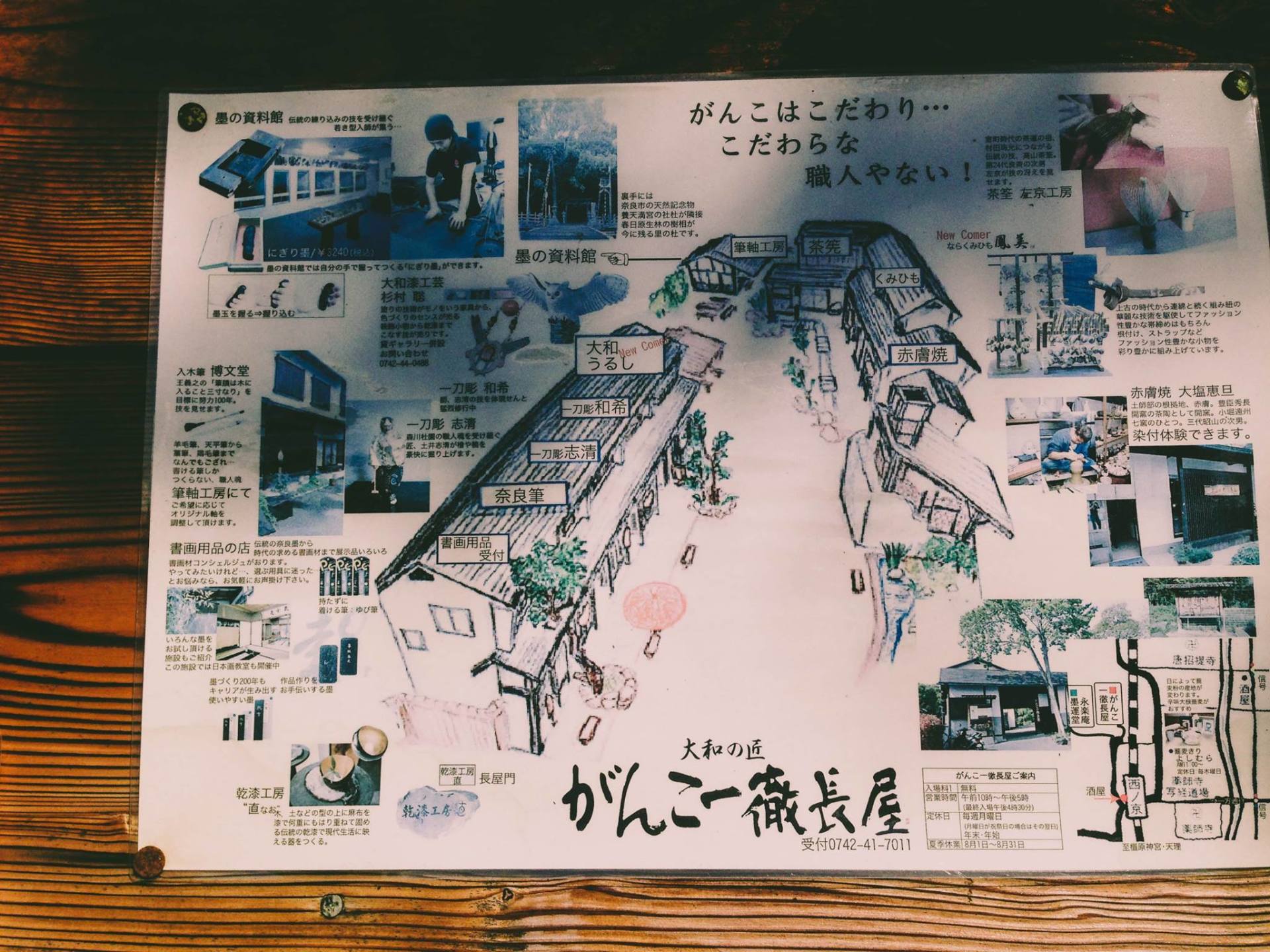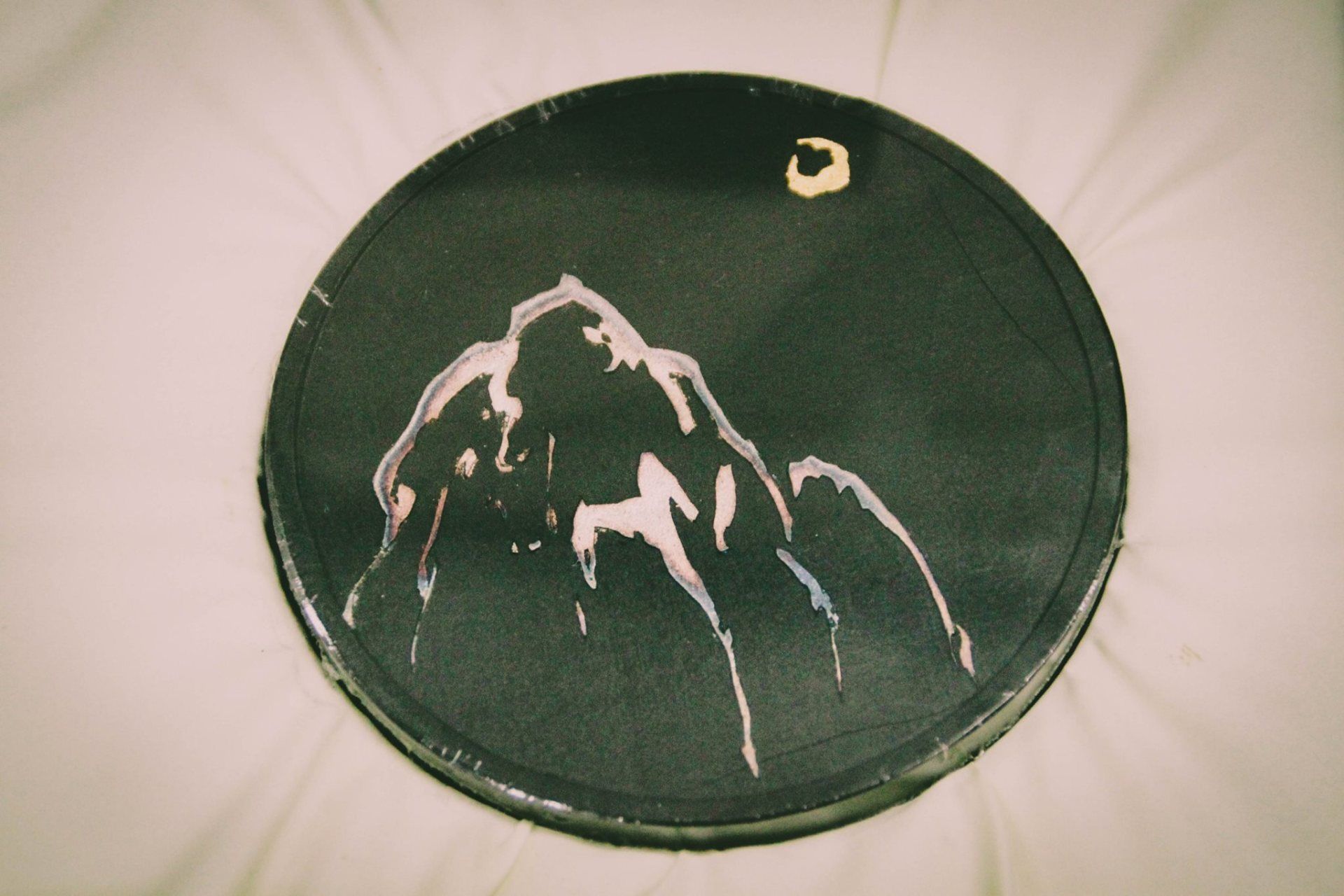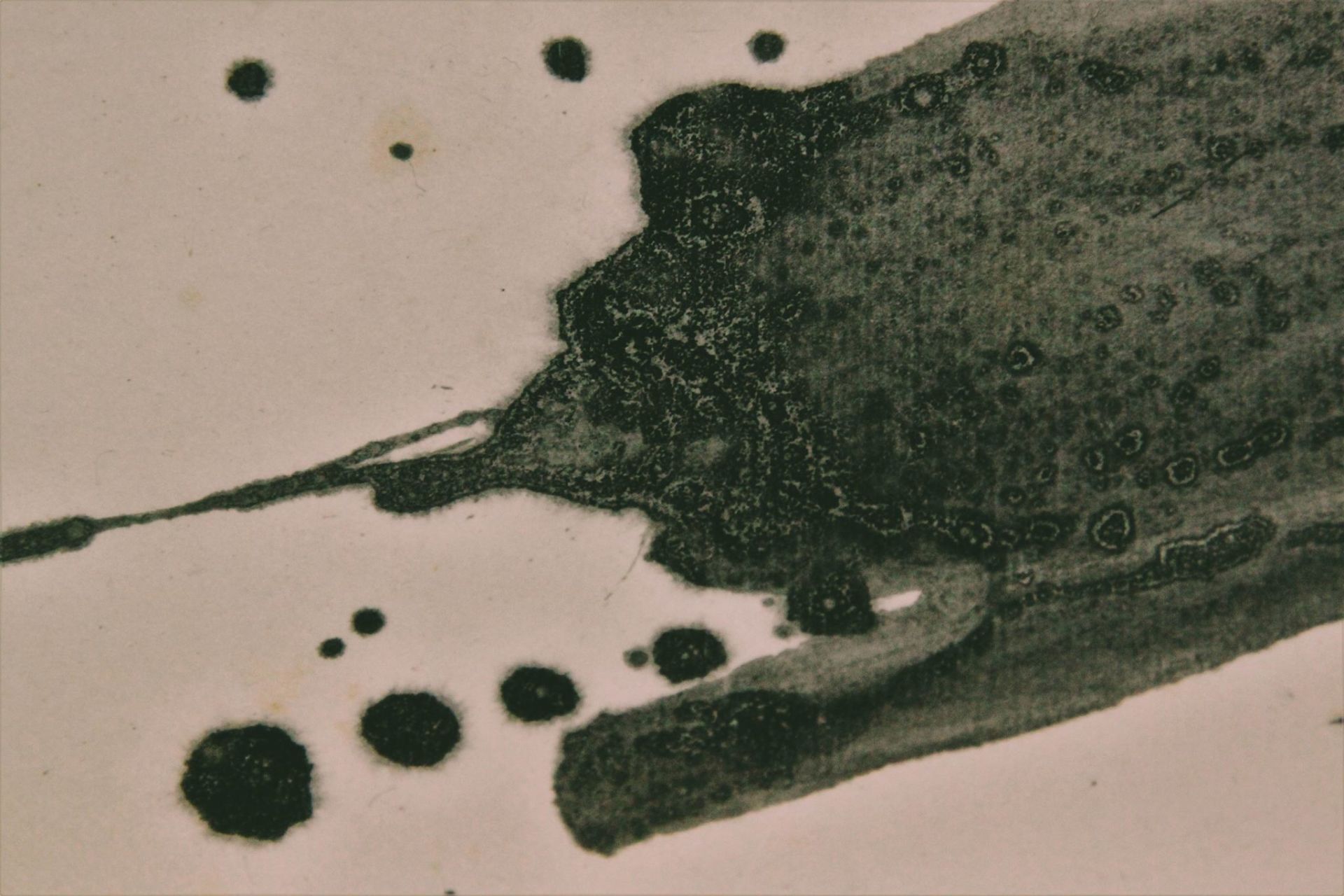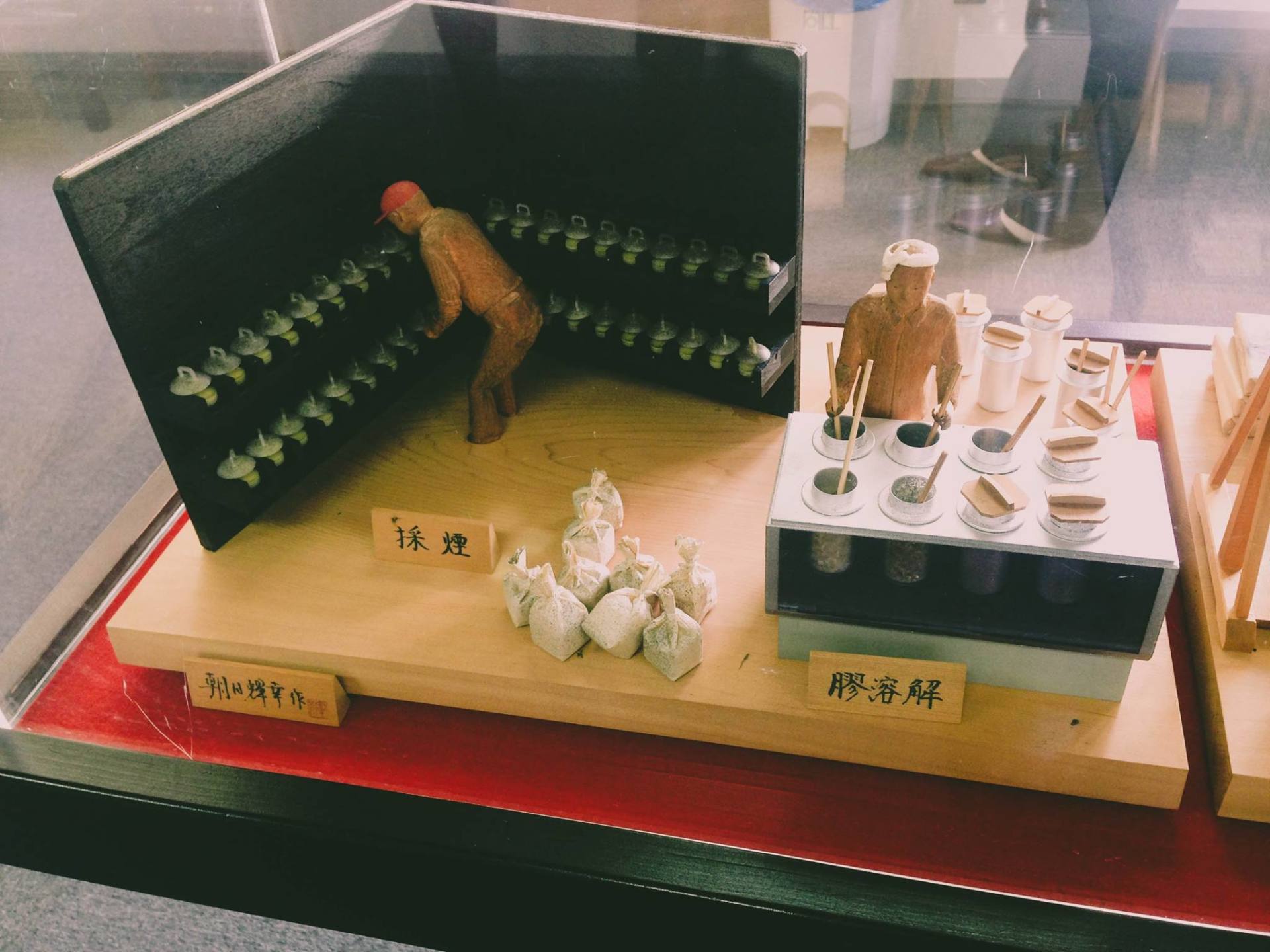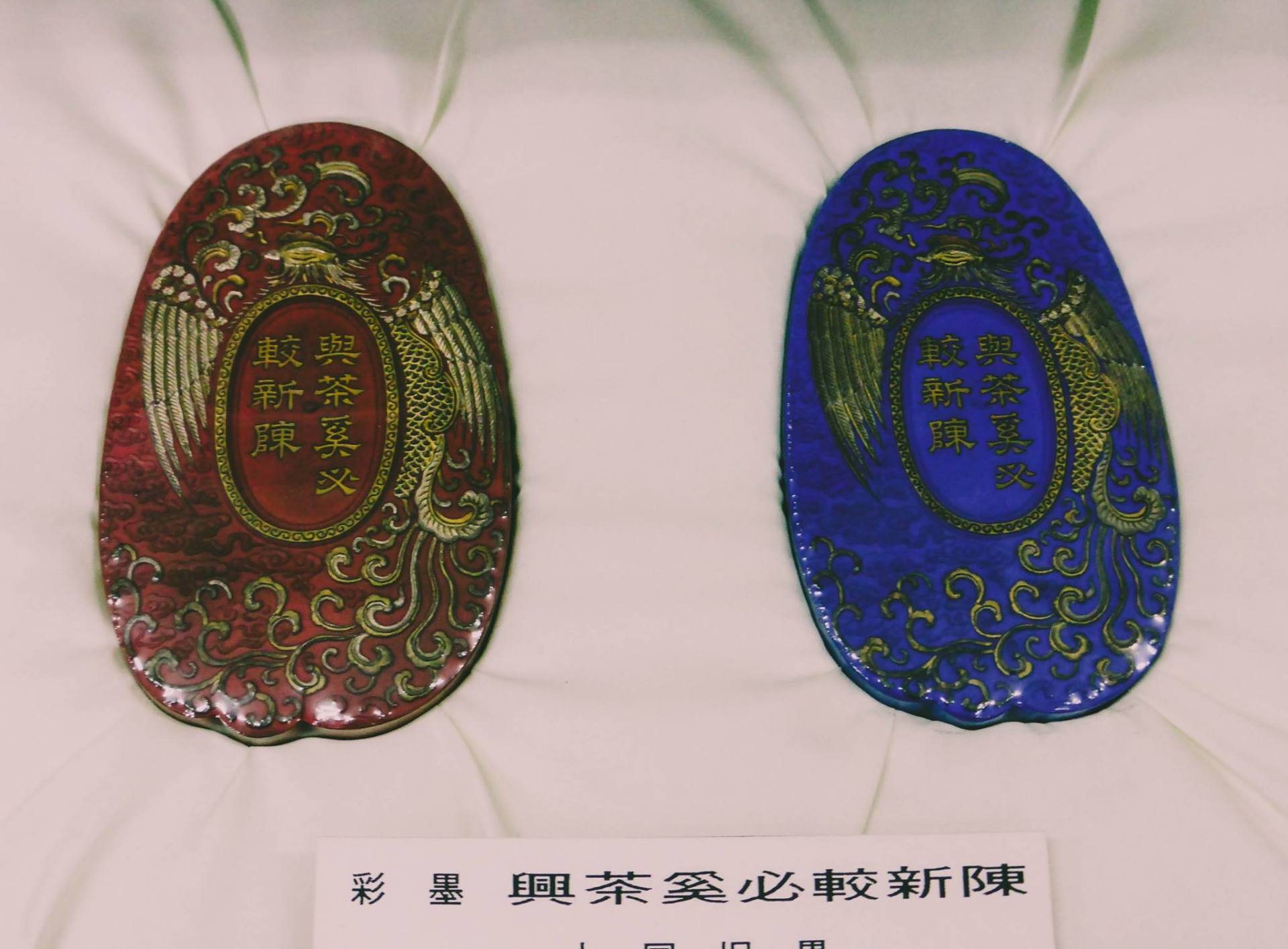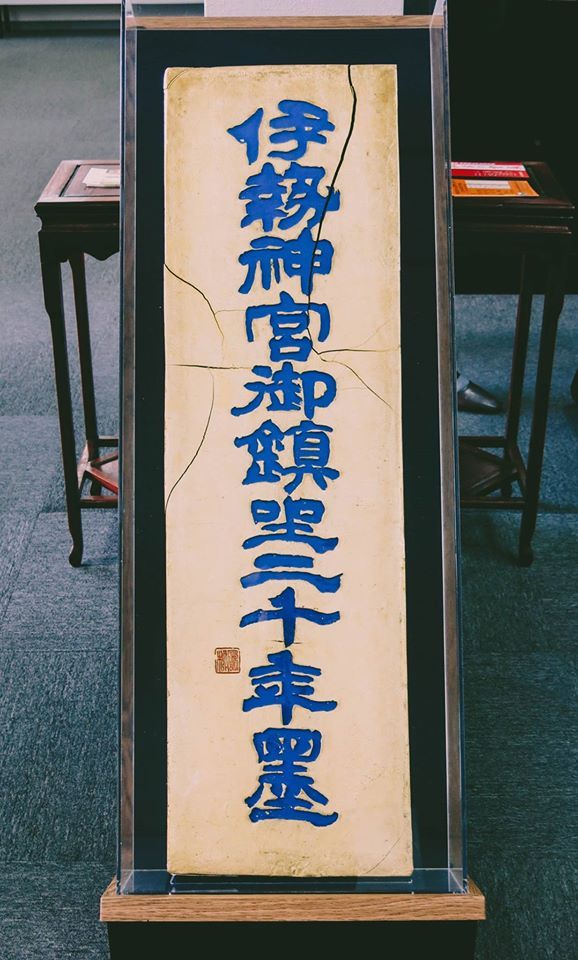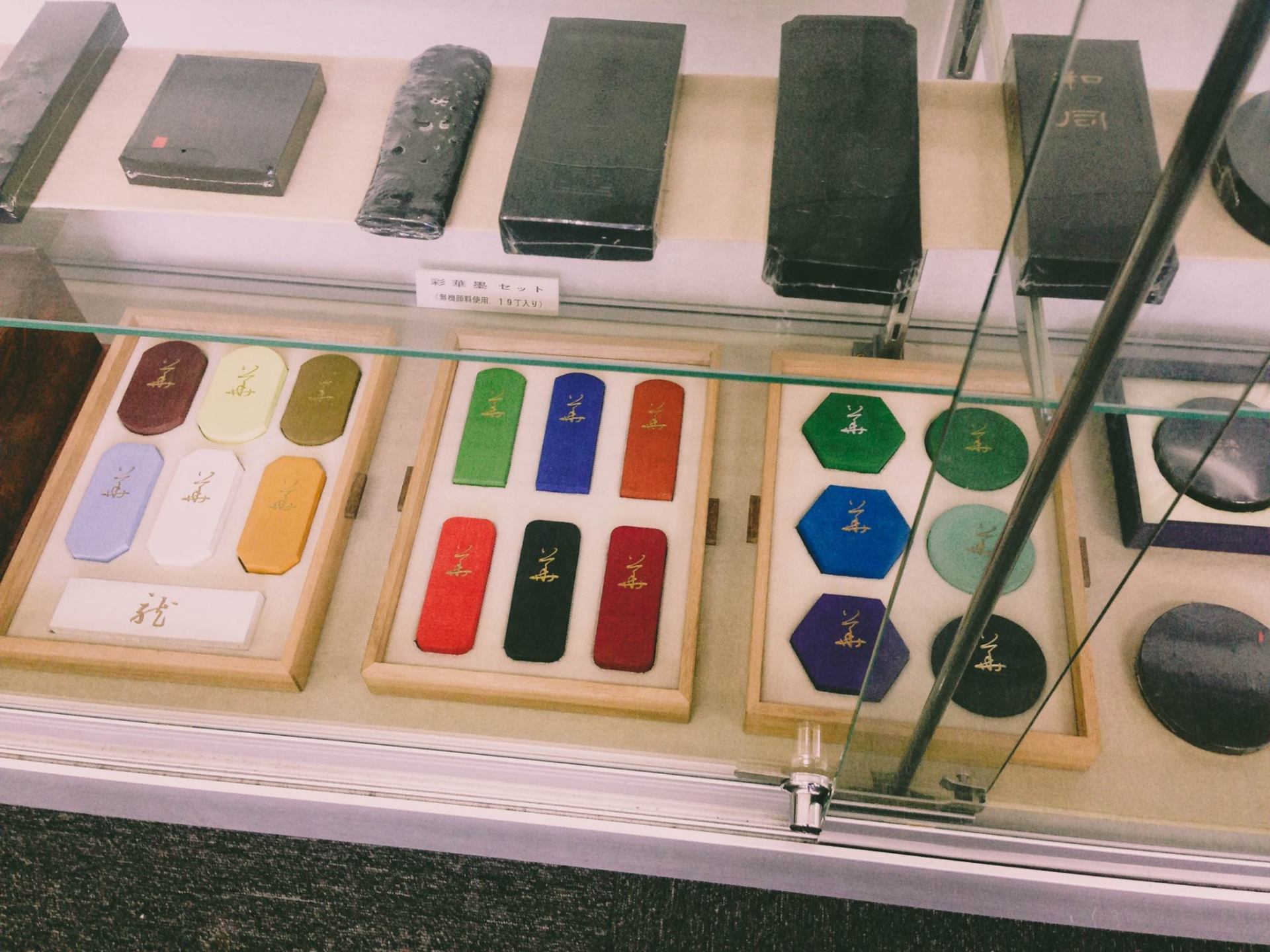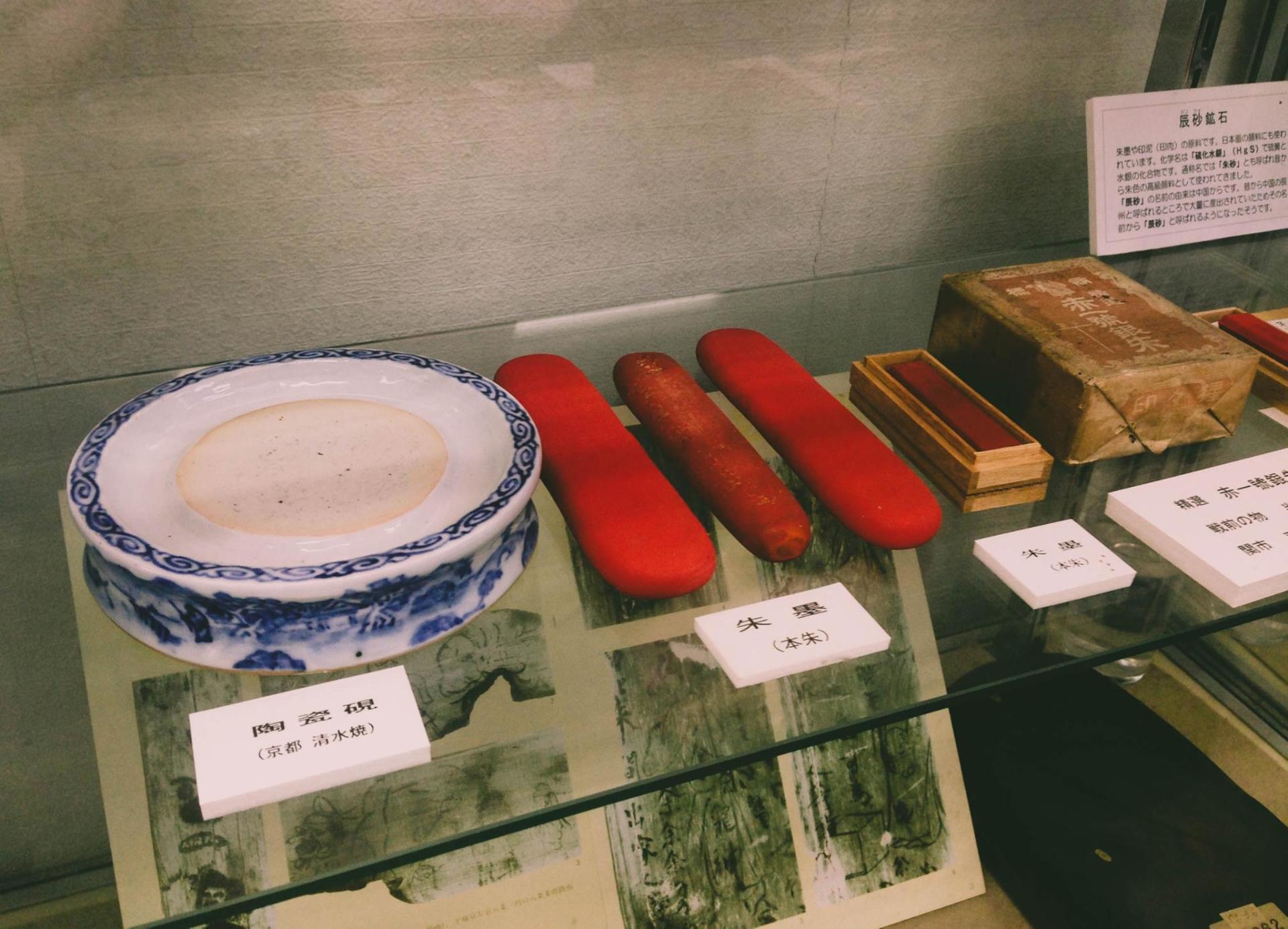BOKU-UNDO Paint Factory, Nara (Japan)
Boku-undo was founded by Kyubei Sumiya in 1805 under the name GOBOTOH, but later changed its name to Matsui BOKU-UN-DO in 1900 and has operated under the same name ever since. Here, the composition of soot and bone glue is chemically analyzed, and ink sticks and also liquid ink are produced, with colors and shades so unique that they meet the needs of painters and calligraphers specializing in the field. They have turned to other companies related to this field during the post-war period and say they will continue to do so in the future. They intend to pursue research, making constant use of the advancement of modern technology to make high quality products, and are now responsible for 90% of ink production throughout Japan.
In addition to making the ink, they make their own packaging, label all the merchandise on site, and package it for later distribution, making the company totally independent. And their work philosophy helps even more to offer good results, since all the employees there are familiar with the entire production mechanism because positions and jobs are rotated from time to time, without this affecting their salaries. And why did Nara, the city where this factory is located, become the center of ink production since the 7th century?
At that time, Nara was the national capital of Japan, and it was a period when literacy was still developing and was then rare. According to official records, the first sumi ink was brought to Japan approximately 1,400 years ago (in 610) by a Buddhist monk from Yurai (South Korea). It was Buddhist priests who used the written language by using the ink to copy the sutras, and this ink was then made by specialists of the Imperial Court.
As a result, ink making began in Nara, a place full of Buddhist temples. Even after the capital was moved to Kyoto, all those temples remained in Nara, along with the ink. During the Kamakura period (1192-1333) ink was first made in the purest Japanese style, using lamp oil and soot; and also so-called Yuen Boku, made from vegetable oil. In the Edo era (18th century) there were only 38 ink makers in Nara, and of these, 13 makers who were trading after the Meiji Restoration (1868) still continue to make ink today, producing 6 million ink sticks a year, or 90% of the entire nation's sumi in Nara alone. But it should be noted that the origin of ink is Chinese. The first ink is said to have been made during the Western Han Dynasty of China (206 BC-8 AD), but there was something similar even before then.
We are talking about a time when neither suzuri (stones for grinding ink) nor paper were yet used for writing. Instead, wood cut into small boards was used to replace paper as a writing medium. Sumi took a spherical shape and was mixed with water in order to be able to use it. Already in the Eastern Han Dynasty (25-220 AD) paper was invented and ink began to be ground on suzuri, and seeing that it was easy and comfortable to use, it became the prototype of today's ink. Shortly afterwards, the place where ink originated, called Yubi (because it was the center of pine soot production), was renamed sumi, thus also giving the name to the ink stick in Japan.
This traditional industry requires skilled manufacturing techniques and optimal time for its manufacture. The cold winter of Nara makes it one of the hardest jobs in Japan. “I care so much about my sumi, I have used it once, my attachment to ink is shortening the days of my life.” We do not know when this sentiment was expressed, but since sumi was intended to be rubbed on a suzuri to gradually bind with water, each precious stick is destined to disappear sooner or later. The person who could say these words perhaps loved sumi too much. And although its color is black, it can express subtle blue-black tones. Moreover, it can be manipulated in so many ways, causing diffusion and blurring effects, even assuming a liquid transparency. Today, characters written with a brush from 2000 years ago remain alive in our eyes. In many cases the shades of the ink are more beautiful now than when they were outlined. With sumi, the passage of time introduces a new depth and it never depreciates. But it will continue to gain in quality and value over time.


